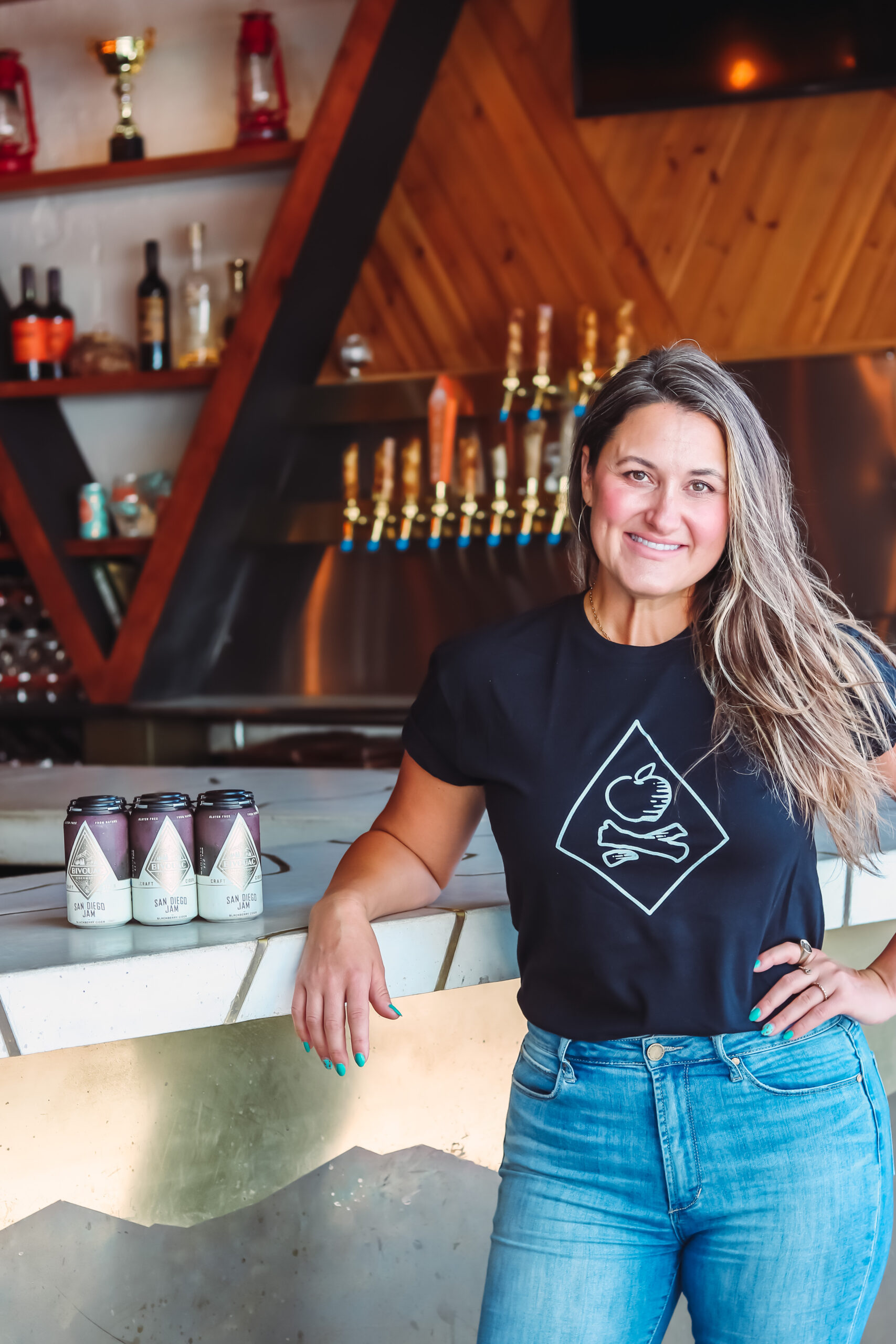Power100 Champion Bivouac Ciderworks Encourages San Diegans to ‘Embrace Your Adventure’
- Dec 12, 2023
- by Jill Monroe
Bivouac’s mission is to encourage people to get outside, cultivate collaborative community and support partners dedicated to charitable and sustainable initiatives.
As a women-powered craft beverage company in the heart of North Park, Bivouac Ciderworks is dedicated to inclusivity, empowerment and celebrating the talents and achievements of people from all walks of life.
This month, we sat down with Lara Worm, owner of Bivouac Ciderworks as she shared how she is working towards a cleaner and greener future for our San Diego community through her commitment to renewable energy.
The interview below has been edited for length and clarity.
San Diego Community Power: Tell us a bit about your business and your mission/vision.
Worm: We say we make craft cider for active adventures. Cider is as approachable as beer, but as nuanced as wine. We knew when building the brand that cider was going to be something new for San Diego. We like to say that our cider tastes as great at the top of a mountain as it does with a fine meal. Our motto is “Embrace your adventure.” The spirit of the brand is this idea of exploration, impermanence and adventure.
Why did you choose to become a San Diego Community Power Power100 Champion?
At Bivouac, we try to make environmentally healthy choices in all aspects of our brand. As a small business, sometimes it is hard to access the most sustainable or environmentally friendly thing, whatever that may be.
Becoming a Power100 Champion aligns with our mission as a brand. While I might not be changing the world with every single decision I make, I’m acting in furtherance of our values, allowing us to get together with other small businesses in the community and speak with a collective voice about something that we’re interested in.
“Making money and having sustainable values are not mutually exclusive. The more that we get together, the more voice we have as small businesses. Consumer demand drives innovation.”
– Lara Worm, Owner of Bivouac Ciderworks
How is Power100 helping your business achieve its sustainability goals?
With any business, there are 100 things you can do that affect the environment. At Bivouac, for example, we try to run a low-waste food kitchen. Making the choice to opt up to 100% renewable energy is one of those choices to do better (and) to make (an) actionable impact in our community.
What opportunities have you enjoyed since becoming a Power100 Champion?
The return on investment has been fantastic. Back in September, I was able to attend a press conference for the Power100 Champions program at Petco Park. It was wonderful to mingle alongside Erik Greupner, CEO of the San Diego Padres, San Diego’s former mayor Jerry Sanders, Councilmember Joe LaCava and other small business Power100 Champions. I just got interviewed as well for San Diego Magazine for the Women’s Issue to showcase my commitment to doing business for good.
Why should other local businesses consider becoming a Power100 Champion?
It’s a fantastic way for customers to identify other like-minded and value-driven businesses in the community. At the end of the day, we want to do good and make sustainable choices. But if you don’t also make money, you’re not a business, right? Making money and having sustainable values are not mutually exclusive. The more that we get together, the more voice we have as small businesses. Consumer demand drives innovation.
Power100 Champions are local businesses that partner with San Diego Community Power to opt up to 100% renewable energy and work towards a cleaner and greener future. To learn more or sign up, click here.

